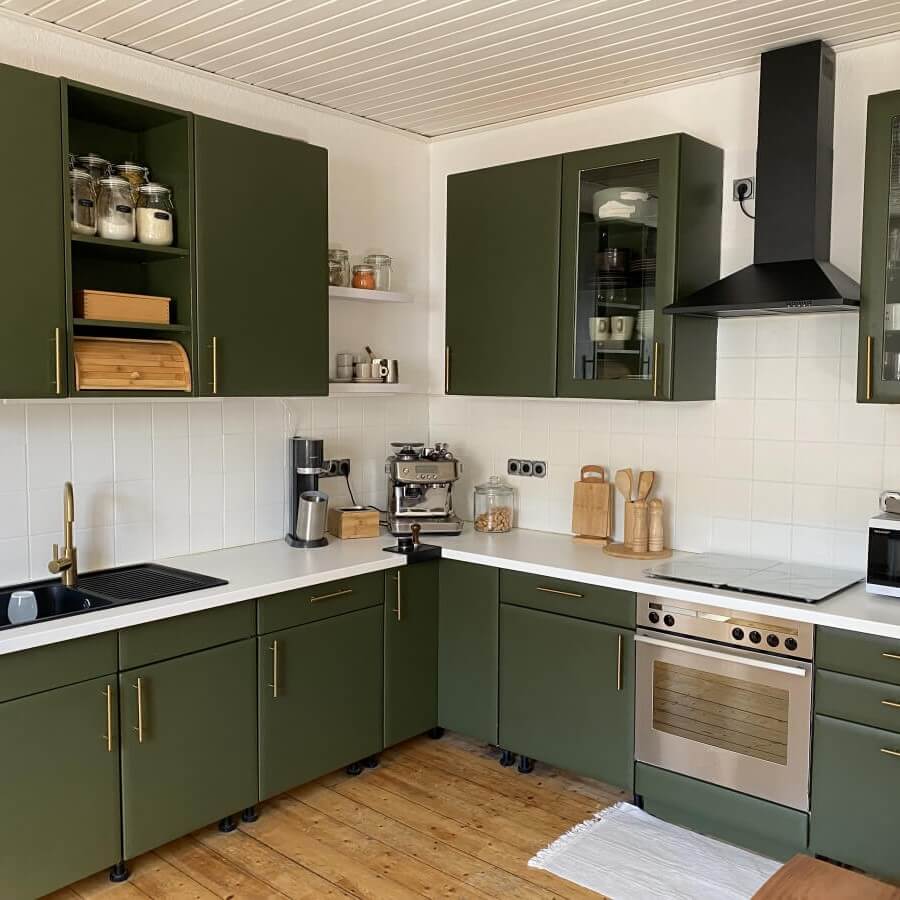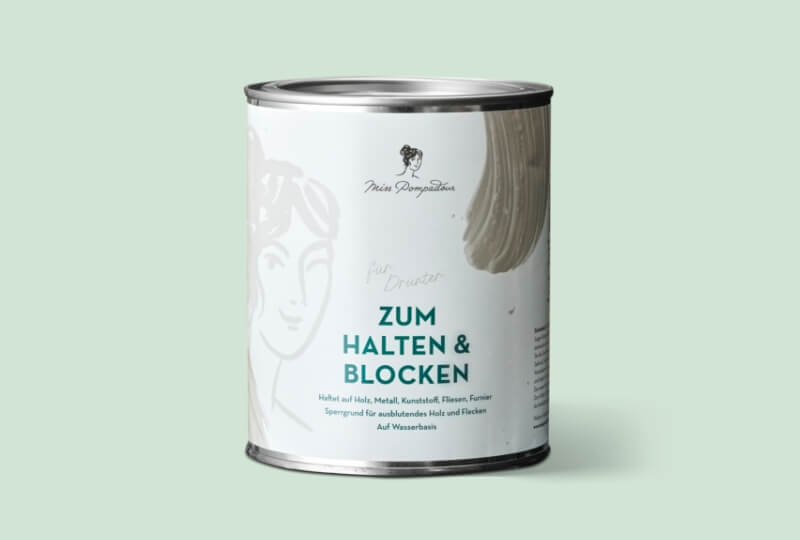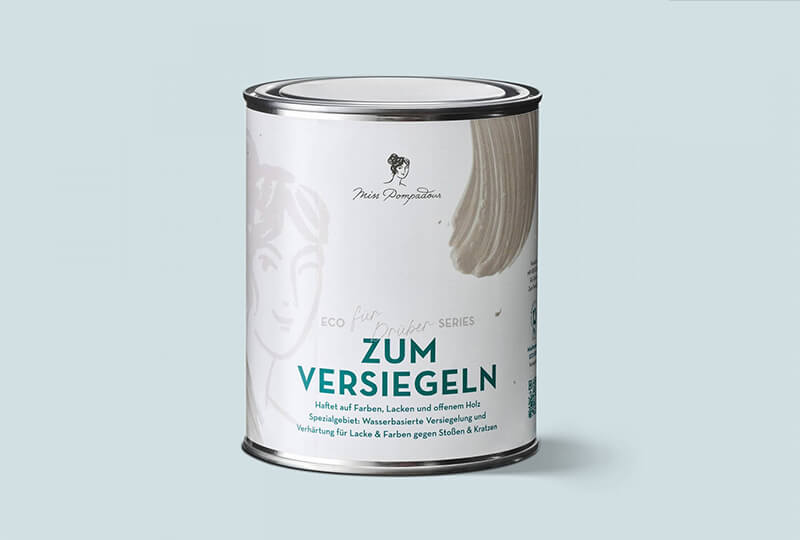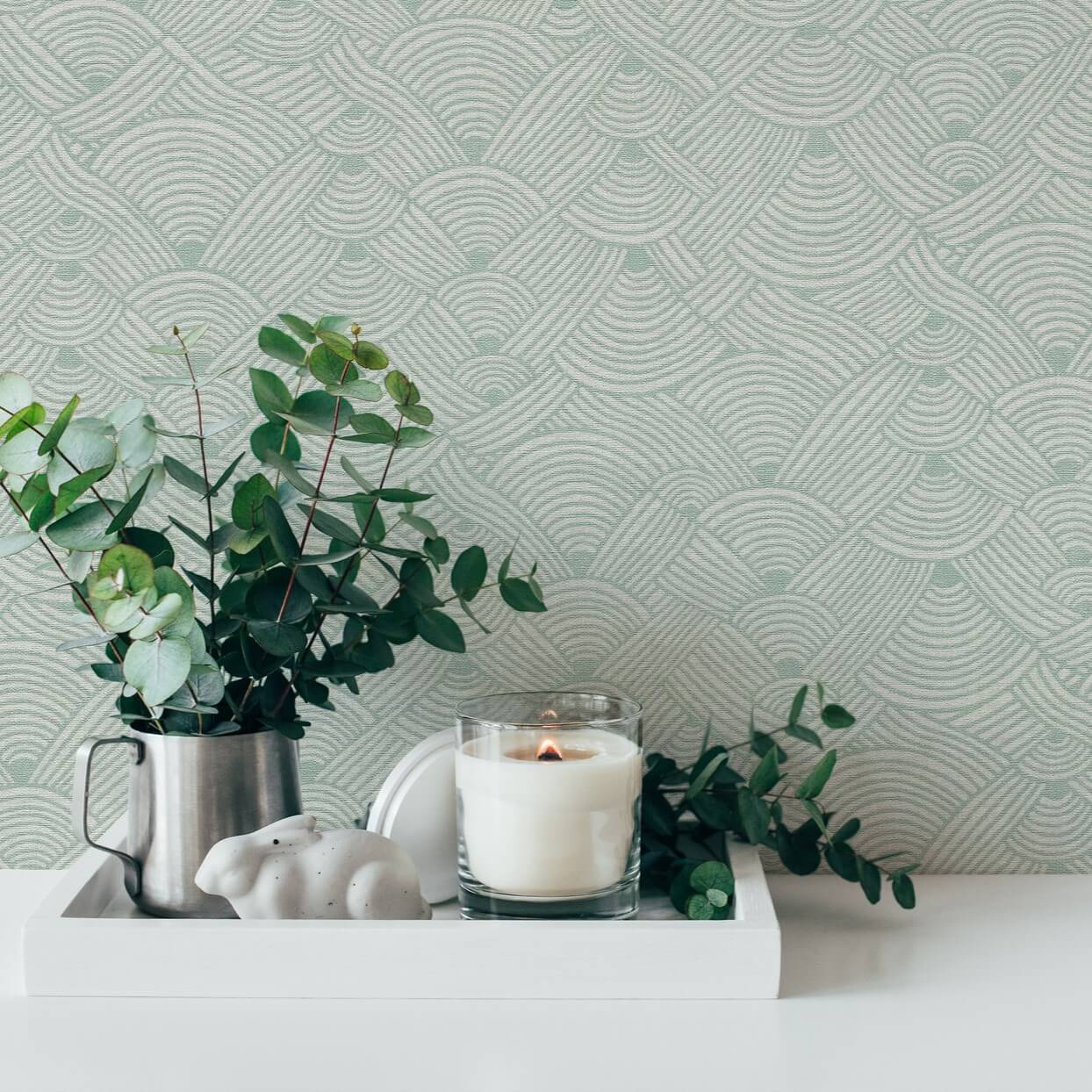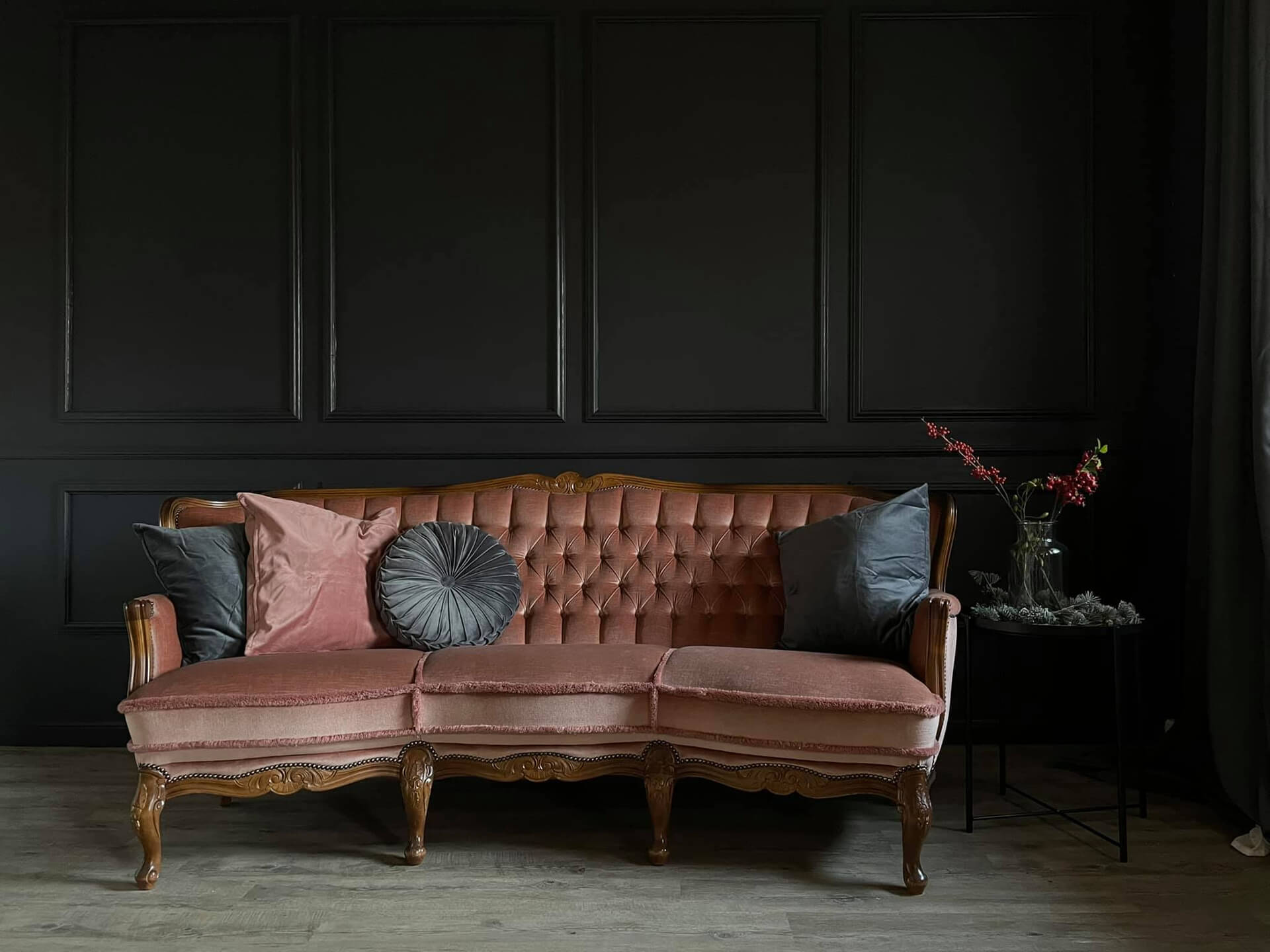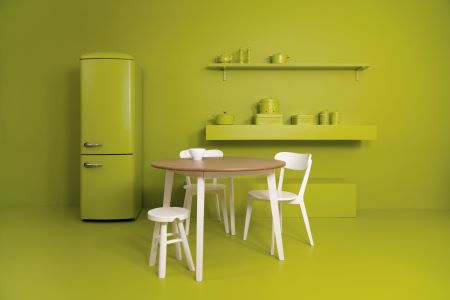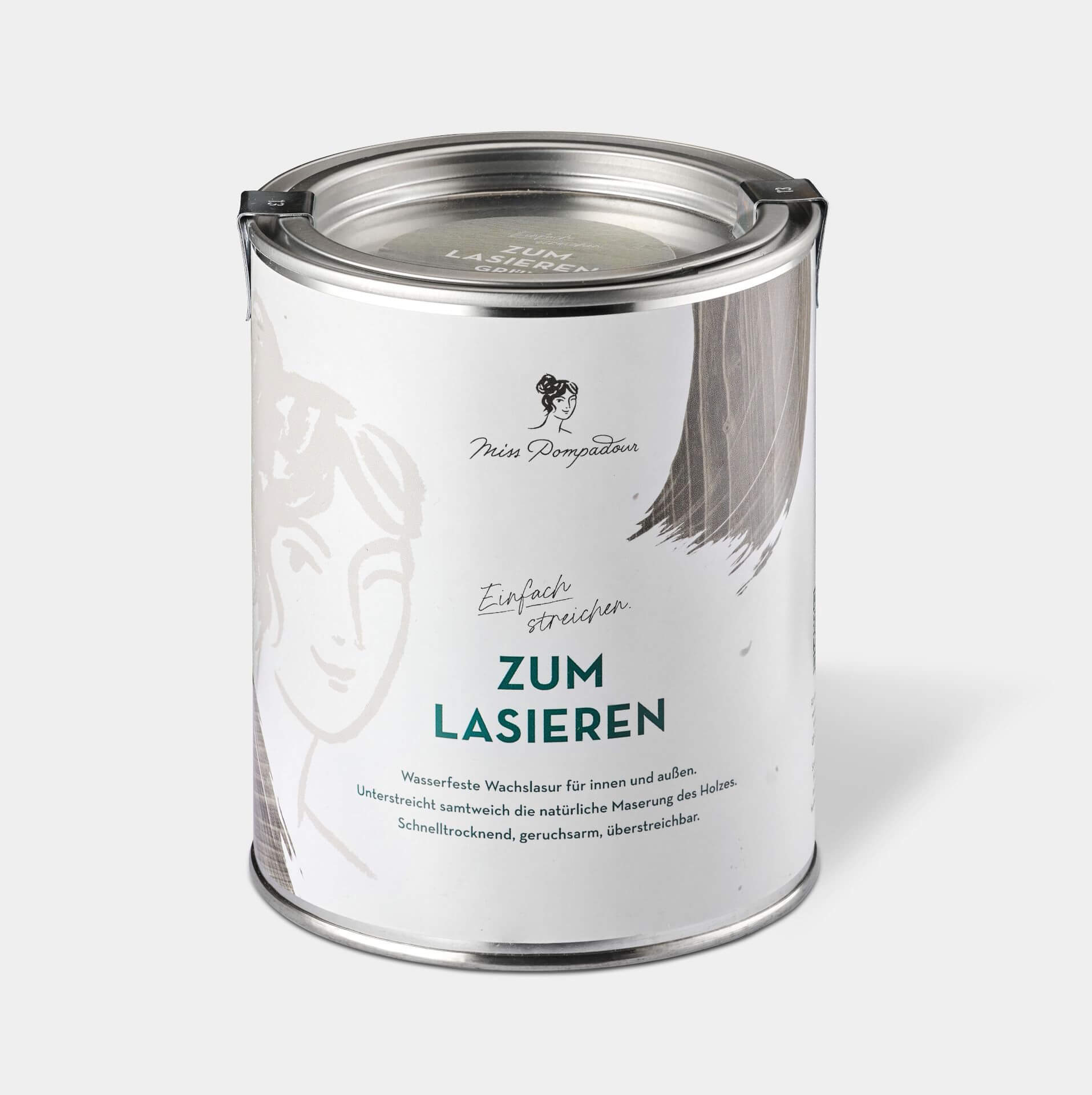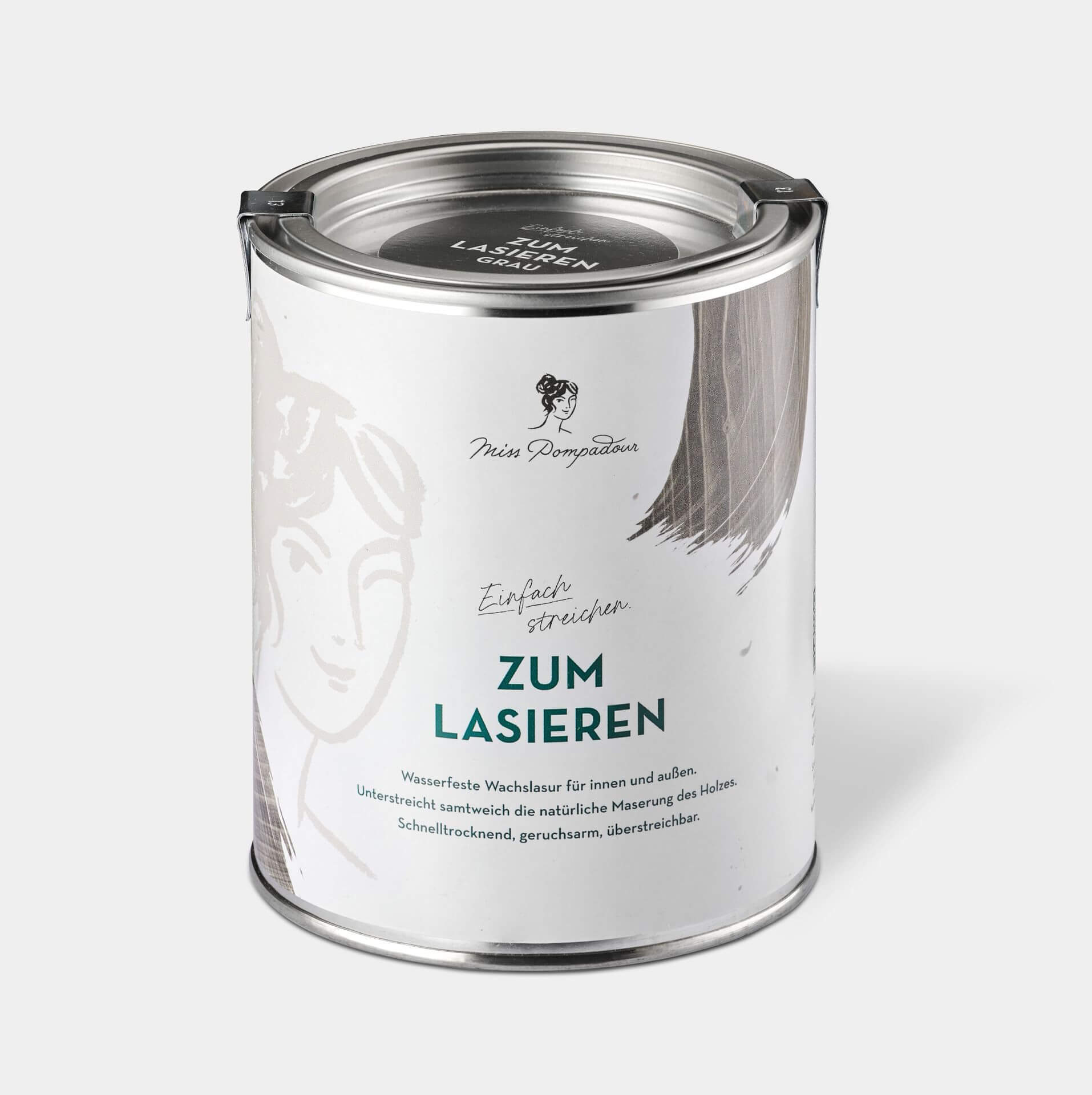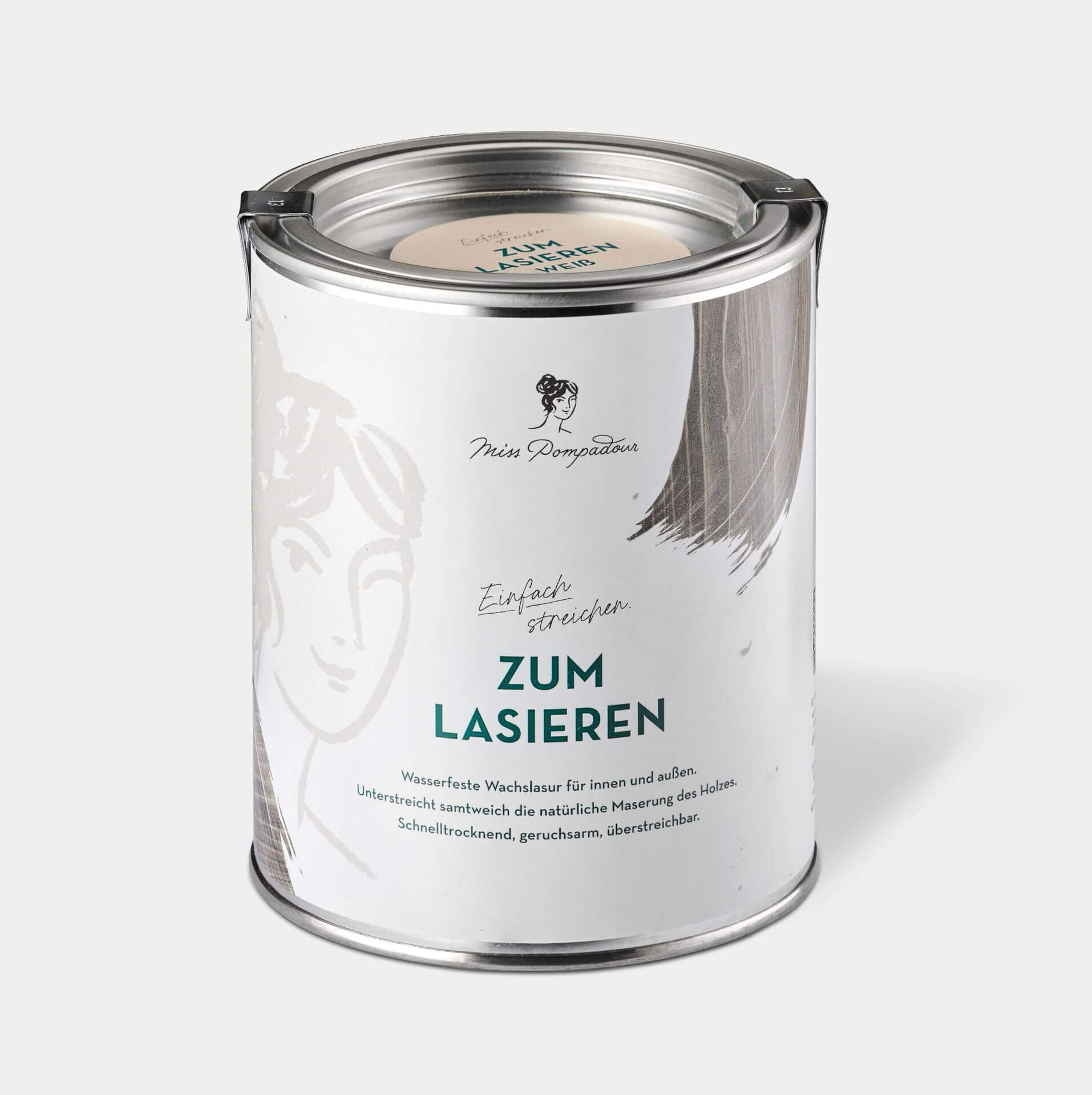

Staining wood: What does a wood stain do?
Stains have many positive properties, regardless of whether you want to protect a wooden surface against weathering and UV rays or enhance its appearance. Stains penetrate deep into the wood while bringing out the wood's grain and texture, and the semi-transparent colour coating transforms its tone.
Purpose of wood stains
A wood stain can be a type of wood preserver. By penetrating into the pores of the wood, it protects from within without forming a film on the surface. MissPompadour wood stains are available in white, green, and grey. Stains are also ideal when the tone of the wood is to be changed or enhanced while retaining the natural character of the surface.
Wood stains for interior decoration
There are many possible uses for wood stains indoors. Generally, only non-coated wooden surfaces should be stained. If, for example, you don't like the tone of a wood-panelled ceiling, because it has darkened or yellowed, you can use our white stain to alter the shade. Of course, this also applies to yellowed wall panelling or doors made of natural wood.
By staining wooden furniture in a different colour, you can achieve great results in your home. For instance, a rather boring heirloom made of oak can be given a very modern look with our grey wood stain. A pine coat rack from the 1980s can be given a new and interesting look with a green wood stain. Other types of wood, such as larch, rosewood, or walnut, can also change their respective hues by finishing them with stains without losing the original character of the wooden surfaces.
Wood stains for exterior weather protection
Our wood stain can also be used outdoors. Teak garden furniture takes on a whole new look when refreshed with white stain. Our stains also protect against weather and UV rays. A wood stain coating is therefore ideal for wooden fences, exterior windows and garden sheds. In short, all wooden elements that are exposed to high levels of UV rays and other outdoor influences. As wood stains have low viscosity and penetrate deep into the wood fibres, nothing can chip off, even under extreme conditions.
How to stain wood: This is how it works
Before staining, it is advisable to sand down the surface evenly. Use Sanding Pad for this. If there are still old varnishes or waxes on the wood surfaces, they must be completely removed before applying the stain. Raw wood should also be sanded evenly.
As always before painting, the surface must be thoroughly cleaned. For this, we recommend our mild yet effective MissPompadour To Clean. After all, you want your wood grain to pop.
After cleaning, apply the first coat of To Stain. Use a soft, wide brush to apply the stain and apply a thin but even coat. A stain does not form layers, allowing the wood to breathe and preserving the wood structure. Leave the stain to dry for 4 hours. With untreated wood, it may be necessary to sand in between, as the wooden fibres are often raised. If you are already satisfied with the colour tone after one coat, you can stop there. If, however, you want to achieve a more intense colour effect or strengthen the protective coating, you can apply a second coat. Each additional coat will give the wood more depth of tone.
Indoors, 1 to 2 coats are sufficient, but outdoors you should always apply at least 3 coats of wood stain to ensure good UV and weather protection.
If you are staining furniture subject to heavy wear indoors, you can apply an additional protective coating of MissPompadour To Seal.
Stains at MissPompadour
At MissPompadour you will find wood stains in 3 different colours. One is To Stain White, which is ideal for restoring yellowed wood. This stain is particularly suitable for interior ceilings, but also for oak or larch furniture. You can also give outdoor teak garden furniture a colour coat by applying a white stain, from a light white shimmer to a stronger white effect.
The natural hue of oak wood often has a somewhat old-fashioned character, which can easily be altered with a white stain. Walnut and rosewood furniture are also often perceived as too dark. You can brighten them up wonderfully with To Stain White!
To Stain Grey immediately gives light-coloured woods a modern touch. This wood stain is suitable for use indoors on wooden furniture as well as in the garden to finish, for example, the garden shed. If the wooden beams in your old house look too rustic, try applying a thin coat of grey stain. Not only will this offer better protection, it will also give your room a completely new look.
To Stain Green has a very classy look, thanks to its chic, moss green colour. This green is by no means only suitable for staining fences or the wooden facades of garden sheds, but it also turns any boring piece of pine furniture into an eye-catcher.
Frequently asked questions & answers
- Which is better for exterior wood - a stain or tinted lacquer?
What stains and tinted lacquers have in common is that they both emphasise the wood grain, change the colour of the wood and can be applied with a brush. Stains penetrate particularly deeply into the wood, whereas tinted lacquers do not penetrate, but provide a layered film in addition to the colouring. Tinted lacquers often lack wood protection qualities, therefore stains are preferred for outdoor furniture. - When to paint over stains?
Stains can be painted over again and again, whether you want a more intense colour or renewed wood protection. How often a stain coating needs to be refreshed, depends on whether your furniture piece is indoors or outdoors and how much wear and tear it is exposed to. You may therefore need to apply a new stain coat after 2 years or only after 4 years. To Stain can also be easily painted over with any wood varnishes by MissPompadour. Tip : When staining raw wood, it makes sense to sand the wood lightly before and, if necessary, in between coats, as wood fibres are often raised. - What is the best wood preservative?
Wood stains and varnishes are suitable for wood protection - it all depends on whether you want the wood grain to remain visible or whether you want a strong colour shade! - Can wood be stained without sanding?
As stains are designed to penetrate the wood, it always makes sense to sand the surface of the wood before treating it with stains.


